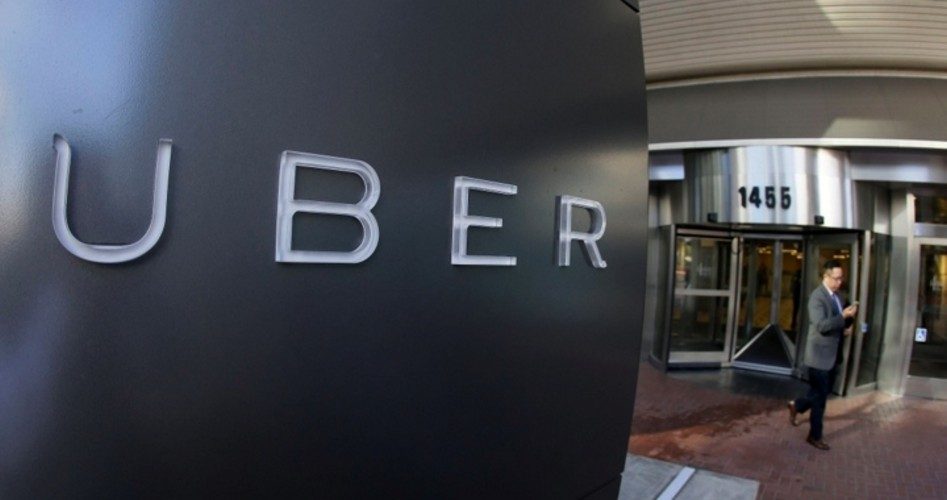
Last Wednesday Queens Supreme Court Justice Allan Weiss ruled that “e-hails” in New York City differ enough from physical hails of taxis to make them legal under the law. This sets back the taxi cartel and those funding it significantly in their battle to keep their turf to themselves. He wrote:
Passenger communications to Uber-type companies [whose drivers use their own cars] via a smartphone are not street hails, which are requests made by passengers standing on the street who gesture or make an utterance.
And then he issued a warning to the cartel about trying to use its high-priced medallions to protect them from innovation. New York taxicabs are operated by private companies and licensed by the city’s Taxi and Limousine Commission (TLC). Only “medallion taxis,” those painted in distinctive yellow paint and regulated by the TLC, are permitted to pick up passengers in response to a street hail.
Judge Weiss warned:
Any expectation that the medallion would function as a shield against the rapid technological advances of the modern world would not have been reasonable. In this day and age … investors must always be wary of new forms of competition arising from technological developments…. It’s not the court’s function to adjust the competing political and economic interests disturbed by the introduction of Uber-type apps.
The lawsuit, brought by four lenders who have loaned more than $2.5 billion to 5,000 medallion owners seeking to operate a cab in the city, have seen the writing on the wall. Not only are those medallions losing value (once priced at $1 million, some are now being offered at $650,000 with no takers) but the last purchase of a medallion occurred in February.
So does their attorney, Todd Higgins, who told the press following the ruling, “A catastrophe is unfolding, as an entire industry continues to be illegally destroyed, while elected officials allow it to happen on their watch.”
Uber first entered the New York City market in 2011 and by 2014 it began to eat seriously into the cartel, flooding the streets with 20,000 vehicles that respond to smartphone e-hails within two minutes. Taxi drivers saw their rides, and their revenues, begin to fall, with regular taxi pickups decreasing by 10 percent in the first half of the year, along with medallion prices.
It was just a few years ago that competition to drive taxis in New York was so intense that drivers sometimes bribed leasing agents for the right to rent cabs. Now there are so many idle taxis that storage facilities parking empty taxis are being called “taxi graveyards.”
Jon-Nicholas Kiouvas has been working for one of those taxi dispatchers since 1996, but for the past seven months he has served as a “runner,” moving vacant taxicabs from one place to another on the streets to avoid getting parking tickets. He initially moves the hundred or so (increasing almost on a daily basis) onto the dispatch lot until the street cleaners have finished, around 1:00 p.m., and then he moves them back out onto the streets, being careful to follow the alternate-side-of-the-street parking rules. He tries to get this done before 5:00 p.m. when the neighbors return from their jobs and try to find parking places for their own vehicles.
Hossam Yossri has been working at the same dispatcher: “Business is so bad that people are dropping off their cabs here. Everyone is going to Uber where they don’t have to pay a lease and they don’t have to deal with a dispatch.”
The waiting room of the dispatch company, McGuinness Management, used to be full to overflowing with drivers waiting for a cab, planning on making $300 to $400 a day. Said Yossri: “You couldn’t even hear yourself talk because it was so noisy. We’d have drivers waiting three hours to get a cab. And then we’d run out and have to turn them away.”
Today, however, McGuinness is advertising two lease-free shifts to anyone who refers a new driver. At any given time during the day, dozens of keys to cabs remain hanging on the wall. And business is so slow that a cabbie is lucky to take home $100 after a full day of driving the city streets.
The owner of McGuinness, Gus Kodogiannis, a Greek immigrant, hasn’t added a new medallion to his fleet in two years, and has eight of them sitting on his desk. He said, “Who’s going to buy them? There’s no point in these stupid things.”
The point is that, left to itself, the free market, not courts or taxi cartels, will determine winners and losers. That Judge Weiss recognizes that fact is encouraging to free market economists such as Walter Williams, who has railed against cartels for years. He observed:
Many cities have granted monopoly power by taxi companies: the right to prevent entry by others…. In New York City such a license is called a taxi medallion. Individual medallions have sold for as high as $700,000 and corporate medallions as high as $1 million.
But with the entry into the market of companies such as Uber, Lyft, and others, the old cartel model’s very existence is being threatened. As Williams noted:
Uber and Lyft drivers like the idea of working when they want to. Some have full-time jobs. Picking up passengers is an easy way to earn extra money. Everyone is happy about the arrangement, except taxi companies and government officials who do their bidding.
The judge and Williams are right: Outmoded cartels and high-priced taxi medallions are no protection from the free market’s determination to find another way to serve customers better, faster, and cheaper.
Photo: AP Images
A graduate of an Ivy League school and a former investment advisor, Bob is a regular contributor to The New American magazine and blogs frequently at www.LightFromTheRight.com, primarily on economics and politics.



